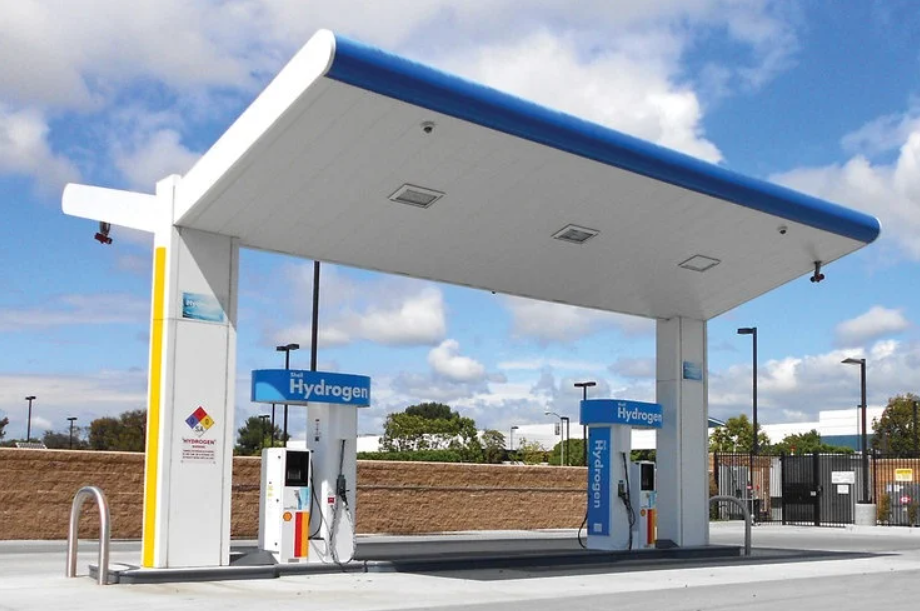
India is at the cusp of an energy revolution. As the world shifts away from fossil fuels to cleaner, renewable energy sources, hydrogen, particularly green hydrogen, is emerging as a cornerstone of this transformation. With the country’s ambitious targets under the National Green Hydrogen Mission, the development of hydrogen refueling stations (HRS) is gaining momentum. These stations play a pivotal role in establishing the hydrogen economy, serving as essential infrastructure to support hydrogen-powered vehicles and the broader application of hydrogen in industries.
The Role of Hydrogen in India’s Clean Energy Journey
Green hydrogen, produced by splitting water into hydrogen and oxygen using renewable electricity, is considered one of the cleanest energy carriers. It offers a promising alternative to reducing carbon emissions across transportation, steel, cement, and power generation industries.
India’s National Green Hydrogen Mission aims to:
- Achieve 5 million metric tonnes (MMT) of green hydrogen production capacity annually by 2030.
- Attract investments worth ₹8 lakh crore.
- Create over 600,000 jobs.
- Reduce reliance on imported fossil fuels.
- Position India as a global leader in green hydrogen production and exports.
As hydrogen fuel cell vehicles (FCVs) and hydrogen-powered industries gain traction, refueling stations are critical to ensuring smooth operations and creating a viable hydrogen ecosystem.
Hydrogen Refueling Stations: The Foundation of the Ecosystem
Hydrogen refuelling stations are the backbone of a hydrogen-powered future. These stations supply hydrogen fuel for vehicles like cars, buses, and trucks equipped with fuel cell technology. Unlike electric vehicles that take time to charge, hydrogen vehicles can refuel in just a few minutes, offering a practical and efficient solution for long-distance travel and heavy-duty transport.
Key Components of Hydrogen Refueling Stations
- Hydrogen Storage Tanks: Store compressed hydrogen gas or cryogenic liquid hydrogen.
- Compressors: Compress hydrogen to the pressure required for refuelling vehicles (typically 350 or 700 bar).
- Dispensers: Deliver hydrogen to vehicles with safety mechanisms in place.
- Electrolysis Systems (for on-site production): Generate green hydrogen using renewable energy.
Hydrogen refueling stations can either source hydrogen from centralised production plants or produce it on-site using water electrolysis and renewable power.
India’s First Hydrogen Refueling Station: A Milestone in Ladakh
In November 2024, India inaugurated its first green hydrogen refuelling station in Leh, Ladakh. Developed by Amara Raja Infra for NTPC Ltd., this station is a benchmark for hydrogen infrastructure in the country. It produces 80 kilograms of green hydrogen daily, supporting the operation of five hydrogen-powered buses in the region.
Why Ladakh?
Ladakh’s cold climate and challenging terrain made it an ideal location to test the feasibility of hydrogen fuel. The project’s success demonstrates hydrogen’s potential in remote and high-altitude areas, paving the way for similar infrastructure in other parts of India.
The Need for Hydrogen Refueling Stations in India
While hydrogen-powered solutions are gaining traction worldwide, the availability of refuelling infrastructure is still a bottleneck. India’s efforts to build hydrogen refuelling stations are vital for several reasons:
1. Decarbonising the Transport Sector
India’s transport sector accounts for nearly 10% of total greenhouse gas emissions. With an increasing demand for cleaner mobility solutions, hydrogen fuel cell vehicles (FCVs) offer an alternative to internal combustion engines and even electric vehicles in some cases.
2. Facilitating Heavy-Duty Transport
While battery-powered electric vehicles are suitable for personal use and light-duty transport, hydrogen-powered trucks, buses, and trains are better suited for long-range, high-load operations. Hydrogen refuelling stations enable the deployment of such vehicles across freight and public transportation.
3. Achieving Energy Independence
India is the world’s third-largest importer of crude oil. Transitioning to green hydrogen can reduce the country’s dependence on imported energy while utilising its vast renewable energy potential to produce hydrogen domestically.
4. Boosting the Hydrogen Economy
A network of hydrogen refuelling stations will drive demand for green hydrogen, creating opportunities for producers, manufacturers, and innovators in the hydrogen value chain.
Global and Indian Efforts: Building a Hydrogen Network
Global Leaders in Hydrogen Refueling Infrastructure
Countries like Japan, Germany, and South Korea have made significant strides in hydrogen infrastructure.
- Japan: Over 160 hydrogen refuelling stations as part of its strategy to support hydrogen FCVs and industrial applications.
- Germany: Aiming for 400 hydrogen refueling stations by 2025 under the National Hydrogen Strategy.
- South Korea: Plans to establish over 310 stations by 2025, with heavy investments in hydrogen-powered buses and trucks.
India’s Progress
While India’s hydrogen infrastructure is in its infancy, the following developments mark progress:
- National Hydrogen Energy Roadmap: Policy incentives and support for hydrogen refuelling stations and fuel cell vehicles.
- NTPC Initiatives: The Ladakh refuelling station and hydrogen buses are early examples of hydrogen adoption.
- State-Level Projects: Gujarat, Maharashtra, and Tamil Nadu are actively exploring green hydrogen hubs.
Challenges in Developing Hydrogen Refueling Stations
Despite the promise, several challenges remain:
- High Initial Costs: Setting up a single hydrogen refuelling station can cost between ₹10-20 crore. Scaling infrastructure requires significant investments.
- Hydrogen Storage and Safety: Storing and transporting hydrogen safely is a technical challenge due to its high flammability and low density.
- Lack of Demand: The limited number of hydrogen fuel cell vehicles in India creates a chicken-and-egg situation for infrastructure development.
- Renewable Energy Integration: Producing green hydrogen requires consistent access to renewable energy, which may not be feasible in all regions.
Solutions and the Path Forward
Public-Private Partnerships (PPPs)
Collaboration between government and private players can pool resources and expertise to establish hydrogen refuelling stations.
Incentives and Subsidies
Government subsidies and incentives for refuelling station operators and FCV buyers can boost adoption and investments.
Focus on Industrial Hubs
Starting with refuelling infrastructure in industrial hubs can generate demand while supporting hydrogen-powered transport for commercial operations.
Advancements in Technology
Research into cost-effective storage solutions, hydrogen carriers like ammonia, and advanced electrolysers can reduce production and refuelling costs.
The Future of Hydrogen Refueling Stations in India
India is on the brink of a green hydrogen revolution, and hydrogen refuelling stations are a critical piece of the puzzle. By investing in infrastructure and fostering innovation, India can create a resilient hydrogen economy that addresses energy security, climate change, and economic development.
While challenges remain, the country’s commitment to clean energy and the strategic role of hydrogen ensure a bright future. As hydrogen refuelling stations expand, they will not only support transportation but also enable industrial and commercial applications, propelling India toward its goal of becoming a global leader in green hydrogen.
